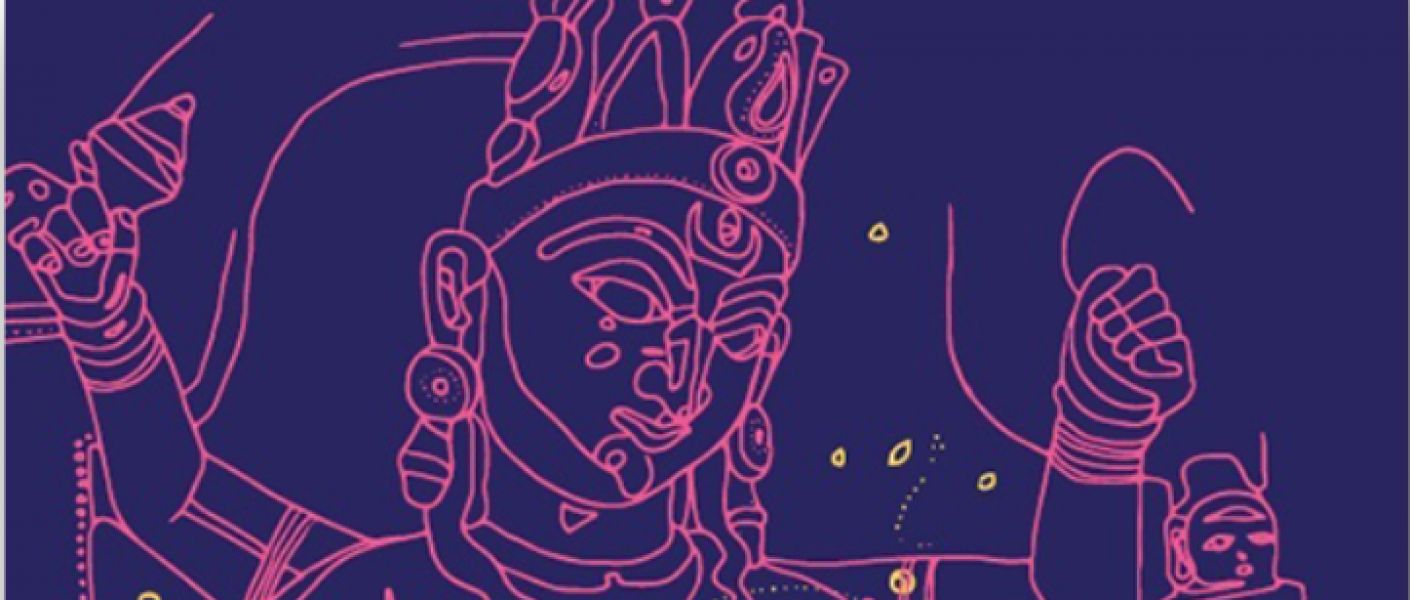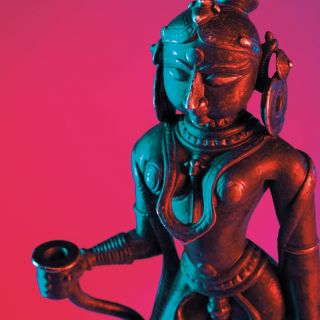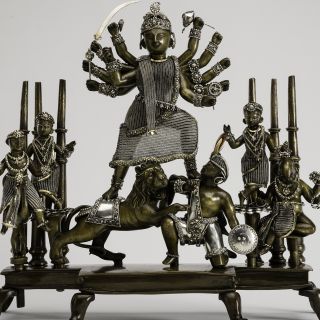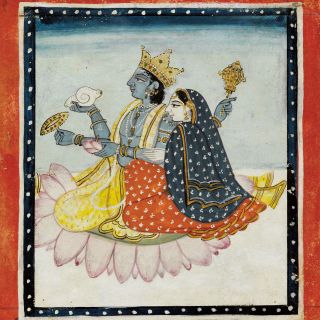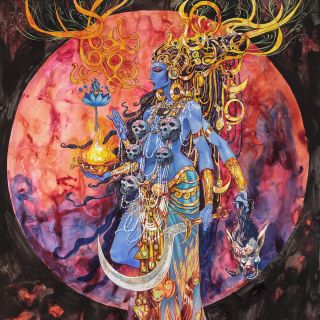GODDESS ǀ WOMAN
On the Indian subcontinent, the different regional cults of the Goddess, or Devi, as she is known in India, are rooted deep in the past. From the age of the Indus Valley Civilisation until the arrival of the globalised world of the twenty-first century, the people of India have long worshipped Devi, and continue to do so. The Goddess – like Hinduism itself – has many faces, and every different face and embodiment of Devi is accompanied by a wealth of different traditions. She is the youthful Beauty, who enchants mortals and gods alike. She is the faithful Wife, seated tenderly in her husband’s lap. She is the Mother, the birth-giver and creator of all humankind. But she is also the belligerent Warrior Goddess, who destroys evil and saves the world from catastrophe.
There are, of course, many other types of beauties, wives, mothers and warriors in India. These are the earthly women: daughters, lovers and mothers. Even though they too are enchanting, caring, blessed with the creative force and fierce as a warrior, they have no temples dedicated to them, nor are sacrifices offered to them. Yet without woman, there would be no life in India, no society, religion or art. Is it not true that the Goddess is a woman? Is it not true that a woman plays the same roles as a goddess? If so, then why are women and goddesses viewed so differently in people’s eyes?
The primary aim of the latest exhibition at the Ferenc Hopp Museum of Asiatic Arts is to present the different faces of Hindu Goddesses through the traditional female roles they fulfil. Where the Goddess appears as a beauty, a wife, a mother and a warrior, the exhibition seeks to answer the question of how these idealised female roles are manifested in earthly society. The objects on show range from classical Indian sculptures to contemporary graphic novels, underlining the continuity of subject and form between ancient and modern Hindu art.
The majority of the exhibits are part of the Indian collection at the Hopp Museum, and they are joined by works reflecting the unique visual world of the living artist Abhishek Singh, which are centred on the identity of Devi. This is the first exhibition at the Hopp Museum for several decades to concentrate on Hindu art, and it encompasses the religious cults of the earliest days of Indian history, as well as the social roles and image of women today.
Besides the exhibits themselves, many of which are now visible to the public for the first time ever, QR codes and Augmented Reality help visitors to deepen their knowledge and understanding of a range of topics.
Younger visitors have their own personal “guide” to show them around – Radhika will present interesting highlights from the exhibition, and give information about India and the world of Hindu gods and goddesses. Placed around the exhibition space are “cultural discovery” boxes and packages, providing visitors of all ages with a true “hands-on” experience.
Further points of interest:
Accompanying the exhibition, and coinciding with events on the Hindu calendar, family days, film clubs, open-air cinema shows and exclusive guided tours will immerse visitors even deeper in Indian art and culture. This year, on the Night of Museums, all our programmes are connected to Indian culture. Among them we have already planned dance performances and puppet shows, and – to our immense delight – we will be visited in person by the Indian artist Abhishek Singh, who has played such an important role in defining the visual image of the exhibition.
As is customary at the Hopp Museum, the exhibition is accompanied by a richly illustrated volume of essays, available both in Hungarian and in English, as well as its own museum education publication in Hungarian, which tells some of the fantastic stories about Hindu gods and goddesses through images recalling the world of the graphic novel. As part of the museum education programme, special lessons and creative workshops will be held, available in Hungarian or Russian.
Curator: Róbert Válóczi
